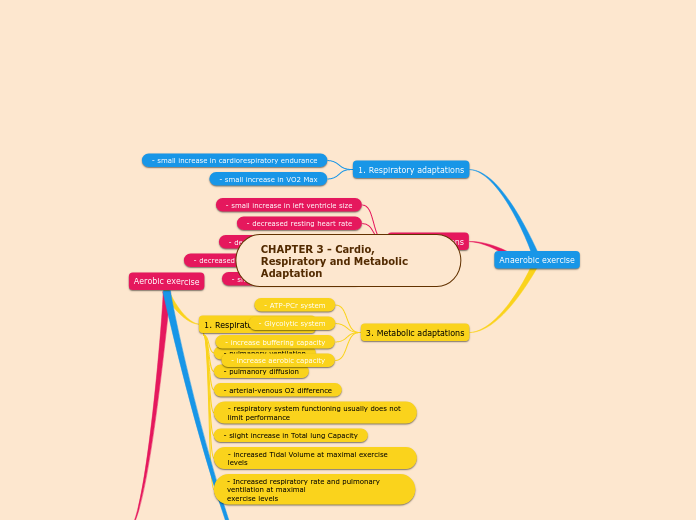CHAPTER 3 - Cardio, Respiratory and Metabolic Adaptation
Aerobic exercise
1. Respiratory adaptations
- pulmanory ventilation
- pulmanory diffusion
- arterial-venous O2 difference
- respiratory system functioning usually does not limit performance
- slight increase in Total lung Capacity
- increased Tidal Volume at maximal exercise levels
- Increased respiratory rate and pulmonary ventilation at maximal
exercise levels
2. CV adaptations
- heart size - cardiac hypertrophy
- increased capillarisation of the heart muscle
- increased stroke volume
- lower resting heart rate
- lower heart rate during sub max workloads
- lower heart rate during max workloads
- decreased heart recovery
3. Metabolic adaptations
- increased mitochondrial density
- increased capillary density
- decreased VO2 during submaximal exercise
- increase aerobic enzyme activity
- muscle store more glycogen
- muscle store more triglyceride
- glycogen sparing effect: less rely on carbo/glycogen
Anaerobic exercise
1. Respiratory adaptations
- small increase in cardiorespiratory endurance
- small increase in VO2 Max
2. CV adaptations
- small increase in left ventricle size
- decreased resting heart rate
- decreased submaximal heart rate
- decreased resting blood pressure is greater
- small increases in stroke volume
3. Metabolic adaptations
- ATP-PCr system
- Glycolytic system
- increase buffering capacity
- increase aerobic capacity
